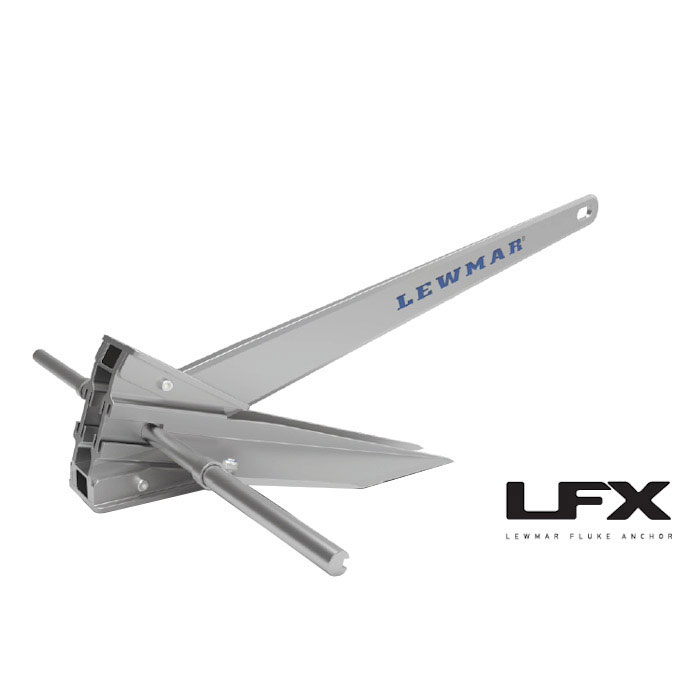How Fluke Style Anchor can Save You Time, Stress, and Money.
Wiki Article
5 Simple Techniques For Fluke Style Anchor
Table of ContentsIndicators on Fluke Style Anchor You Need To Know4 Simple Techniques For Fluke Style Anchor6 Easy Facts About Fluke Style Anchor ExplainedThe Ultimate Guide To Fluke Style AnchorThe Ultimate Guide To Fluke Style AnchorFluke Style Anchor Can Be Fun For Everyone
There are a number of brand names and designs of supports on the market. We take an appearance at some new anchors and also some old faves.Clearly, we need supports that hold, but in what conditions? Cruisers may desire anchors good on a variety of sea floor types that are really protected in severe wind and sea problems, while anglers securing continuously in a place with one base kind, sand as an example, might choose a various design.
And it is this depend on element that a support will hold in unfavorable conditions, on a lee shore, even when the watercraft swings and the collection is turned around that must aid sailors choose which is best. Below's a primer on a few of the major brand names and or designs of supports, and what they're best made use of for.
Fluke Style Anchor Fundamentals Explained
The reasonably large claws of the support provide it holding power in a soft base, though not as much as a style like the Danforth, and also it additionally succeeds on rocky bottom, but frequently has problems with tough clay or grass bases. It's thought about a good choice for long-term anchoring in saltwater since it has a tendency to stay secure with modifications towards pull.The distinction in between an authentic Danforth support as well as the many less-expense copies is generally the high quality of the materials and also the angle of the flukes (Fluke Style Anchor). The Danforth people state their angle is maximum, as well as they have whole lots of test information to show it. We think they are fine as the primary support in certain locations on all sort of watercrafts, and constantly good as a back-up anchor, which all huge watercrafts should have.
They are reasonably light-weight for the holding power they have since they have a lot of surface area and area is one trick to holding power. This makes them effective over supports that are commonly twice their own weight. They are one of minority supports on the marketplace that can be adjusted on the fly, and can be angled for various lower problems.
The 30-Second Trick For Fluke Style Anchor


For numerous seafarers, in order to anchor solidly on all the various kinds of base they might experience, lugging two anchors is in order: one for soft base, and also one for holding limited on framework. As well as, of course, see to it each anchor is sized appropriately for the watercraft you plan to utilize it with.
Mushroom anchors depend primarily by themselves weight to hold position, so Continue they aren't generally of much helpful for boats of any type of genuine dimension. While a 10-pound mushroom works simply great for a Jon watercraft in a lake, the big size required for bigger boats utilized in open waters makes them impractical.
The Fluke Style Anchor PDFs
Navy supports dig in deep and hold tight much more with weight. Generally discovered on commercial vessels, navy supports are normally cast-iron building and construction, are heavy and prone to rusting, which is why they usually have plastic finishes when made use of on little watercrafts. Old-time fisherman supports have great holding qualities and also top article set quickly, yet are large to stow, even when folding the cross-piece that keeps the anchor fluke angled appropriately.Rope alone seldom works as well as having an adequate length of chain in between the rope as well as the support is crucial. Just what is that length? It relies on the size of your boat and the depth of the water you normally anchor in, however as a basic general rule you'll wish to use a minimum of 10 feet of chain and ideally, the same length of chain as your watercraft's LOA.
Beginning with how much scope (added line) is allow out after the support hits base. At a bare minimum in tranquil water a three-to-one proportion to the water depth is enough.
The Definitive Guide for Fluke Style Anchor
There are a number of boat anchors available, created of different products, and frequently with complex names. This short article will talk about the most popular kinds of boat supports, exactly how to pick the best anchor for your boat, the most typical product types, and visit their website likewise provide a review of various calling conventions (Fluke Style Anchor).The Bruce, or Claw, remains one of the most prominent supports amongst recreational boaters in North America. The Bruce was established in the 70s by the Bruce Anchor Group.
Performs well in most bases; Struggles in difficult bases such as clay, or hefty lawn. Both the CQR/Plow as well as the Delta/Wing are a plow design support. The most significant difference in between these supports is the reality that the CQR has a hinged style whereas the Delta is a one item design.
The Single Strategy To Use For Fluke Style Anchor
Despite this, it has relatively low holding power and also it regularly struggles in independent tests. It's also rare to discover a CQR under 25 pounds providing itself to the stating "There's no such thing as a little CQR". Regardless of these drawbacks, the hinged design makes it much more responsive to wind and also trend adjustments as compared to other supports.
Report this wiki page